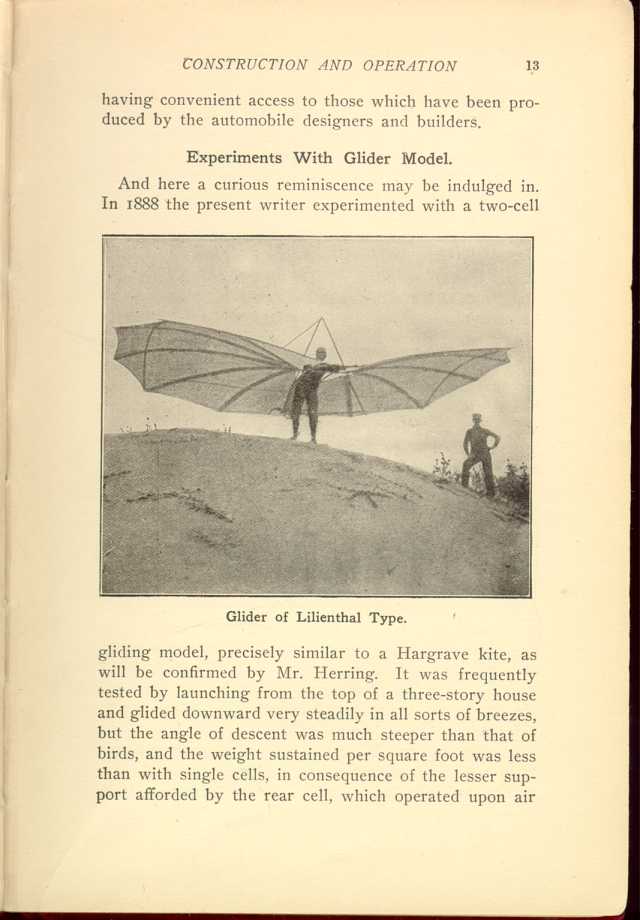Experiments With Glider Model.
And here a curious reminiscence may be indulged in. In 1888 the
present writer experimented with a two-cell

Glider of Lilienthal Type.
[Description: Black and white photograph: Man operating bat-winged glider.]
Sir Hiram Maxim also introduced fore and aft superposed surfaces in his wondrous flying machine of 1893, but he relied chiefly for the lift upon his main large surface and this necessitated so many guys, to prevent distortion, as greatly to increase the head resistance and this, together with the unstable equilibrium, made it evident that the design of the machine would have to be changed.